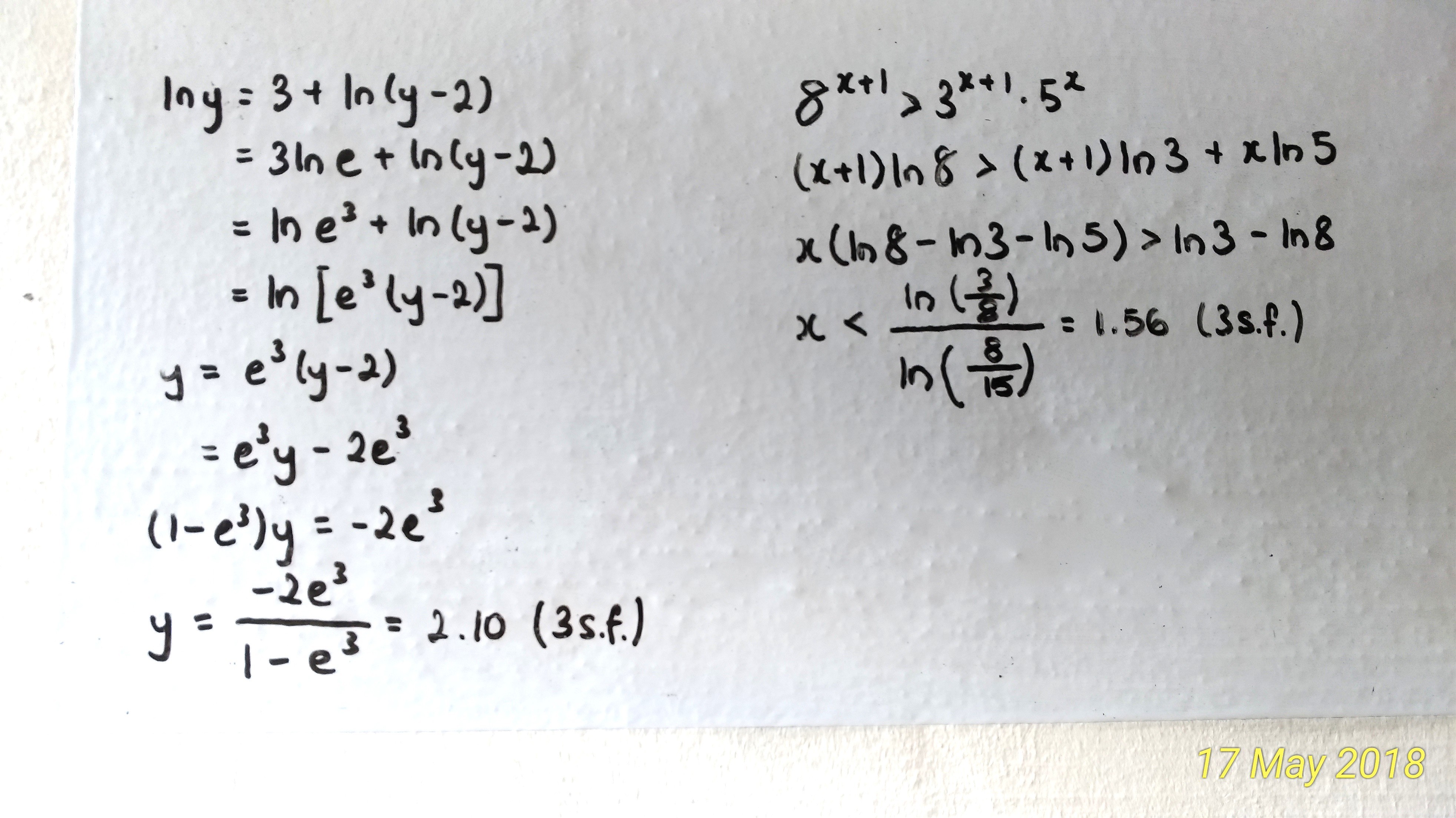Tay Cong Run's answer to Newzealand's Junior College 1 H1 Maths question.
done
{{ upvoteCount }} Upvotes
clear
{{ downvoteCount * -1 }} Downvotes
1) ln(e) = 1. The strategy is to manipulate both sides to be in the form of ln ( ) = ln ( ) so you can get rid of the ln. After which, make y the subject. e is a constant whose value you can find using the calculator. So once you have y expressed in terms of e, you have the answer.
2) Since 3, 5 and 8 have no common prime factors, this question cannot be tackled using prime factorisation. Since the unknown is in the power, your intuition should be to bring the power down (using logarithms). Unless otherwise specified by the question, the simplest is to use the natural logarithm, ln, so as to avoid having to change bases. Of course, you can work with log base 3, 5 and 8, but it will be cumbersome to key into your calculator. Once you bring the power down, simply make x the subject. It is important to note that ln 8 - ln 3 - ln 5 is negative, so dividing by it means the direction of the equality sign must be reversed.
2) Since 3, 5 and 8 have no common prime factors, this question cannot be tackled using prime factorisation. Since the unknown is in the power, your intuition should be to bring the power down (using logarithms). Unless otherwise specified by the question, the simplest is to use the natural logarithm, ln, so as to avoid having to change bases. Of course, you can work with log base 3, 5 and 8, but it will be cumbersome to key into your calculator. Once you bring the power down, simply make x the subject. It is important to note that ln 8 - ln 3 - ln 5 is negative, so dividing by it means the direction of the equality sign must be reversed.
Date Posted:
6 years ago

